Scaffolding Rental Silver Spring
Find top Affordable Scaffolding Rental in Silver Spring
Get up to 3 Scaffolding Hire quotes for your project today! Compare profiles, reviews, accreditations, portfolio, etc... and choose the best deal.

Layher Scaffolding
51 reviews8225 Hansen Road, Houston, 77075, USLayher North America is a leading provider of scaffolding systems and solutions. With a strong presence in the United States and Canada, we offer a wide range of products and services designed to meet the needs of various industries, including construction, oil and gas, power plants, and more. Our scaffolding systems are designed to be safe, efficient, and cost-effective. We offer a variety of scaffolding solutions, including Allround Scaffolding, Layher Lightweight, SpeedyScaf Scaffolding, STAR Frame Scaffolding, and Rolling Towers. Our protective systems include Allround FW Roof, Keder XL Roof System, Cassette Roof, Protect System, and Edge Protection Railing Clamp. At Layher North America, we are committed to providing our customers with the highest level of service and support. Our team of experts is dedicated to helping you find the right scaffolding solution for your project. We offer pre-planning and optimization, on-site support and training, digital design and engineering, and scaffold information modeling. We are proud to be a part of the Layher Group, a global leader in scaffolding systems. With a strong presence in over 40 countries, we are well-equipped to meet the needs of our customers around the world.
- Services
- Why Us?
- Accreditations
- Gallery
Get Quote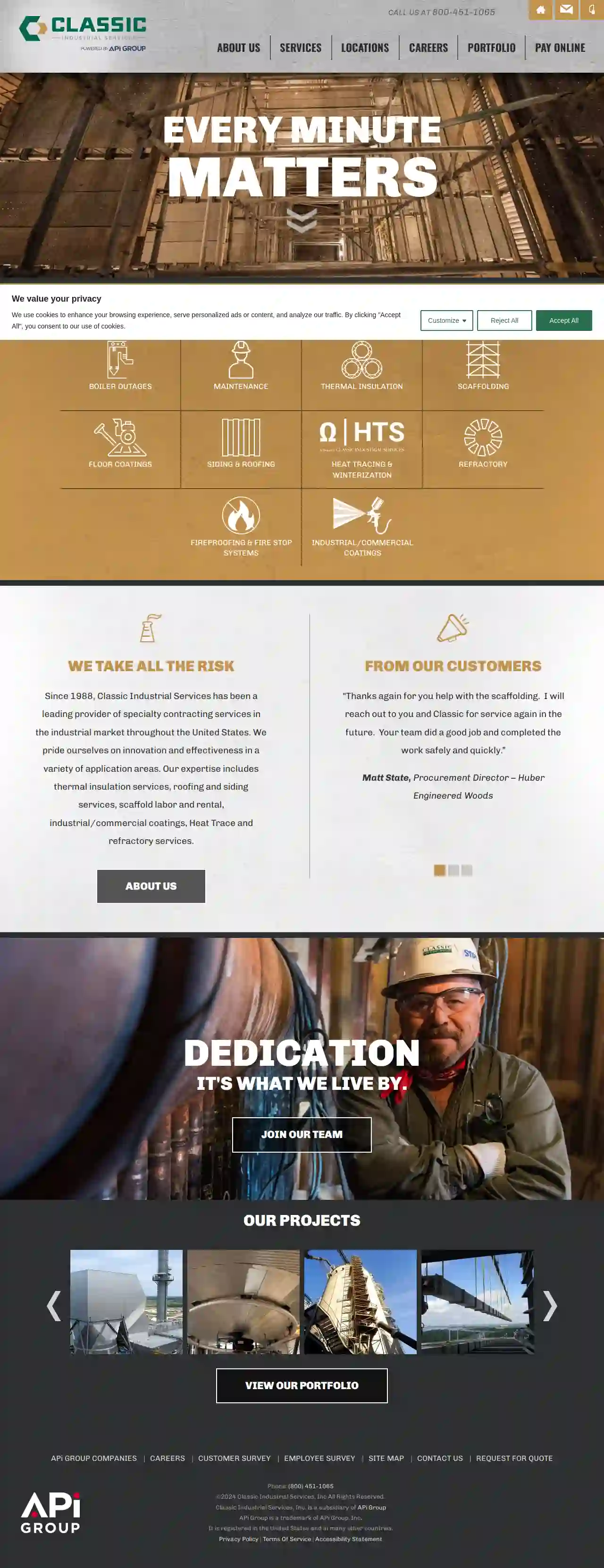
Classic Industrial Services Inc
53 reviews456 Highlandia Drive, Baton Rouge, 70810, USClassic Industrial Services is a leading provider of specialty contracting services in the industrial market throughout the United States. Since 1988, we have been dedicated to innovation and effectiveness in various application areas including thermal insulation services, roofing and siding services, scaffold labor and rental, industrial/commercial coatings, Heat Trace and refractory services. Our core purpose is to provide construction services that make our customers' projects simpler and more successful. We prioritize safety, respect, and fairness in our work, and we are committed to delivering quality work and customer service for every project.
- Services
- Why Us?
- Accreditations
- Our Team
- Testimonials
- Gallery
Get Quote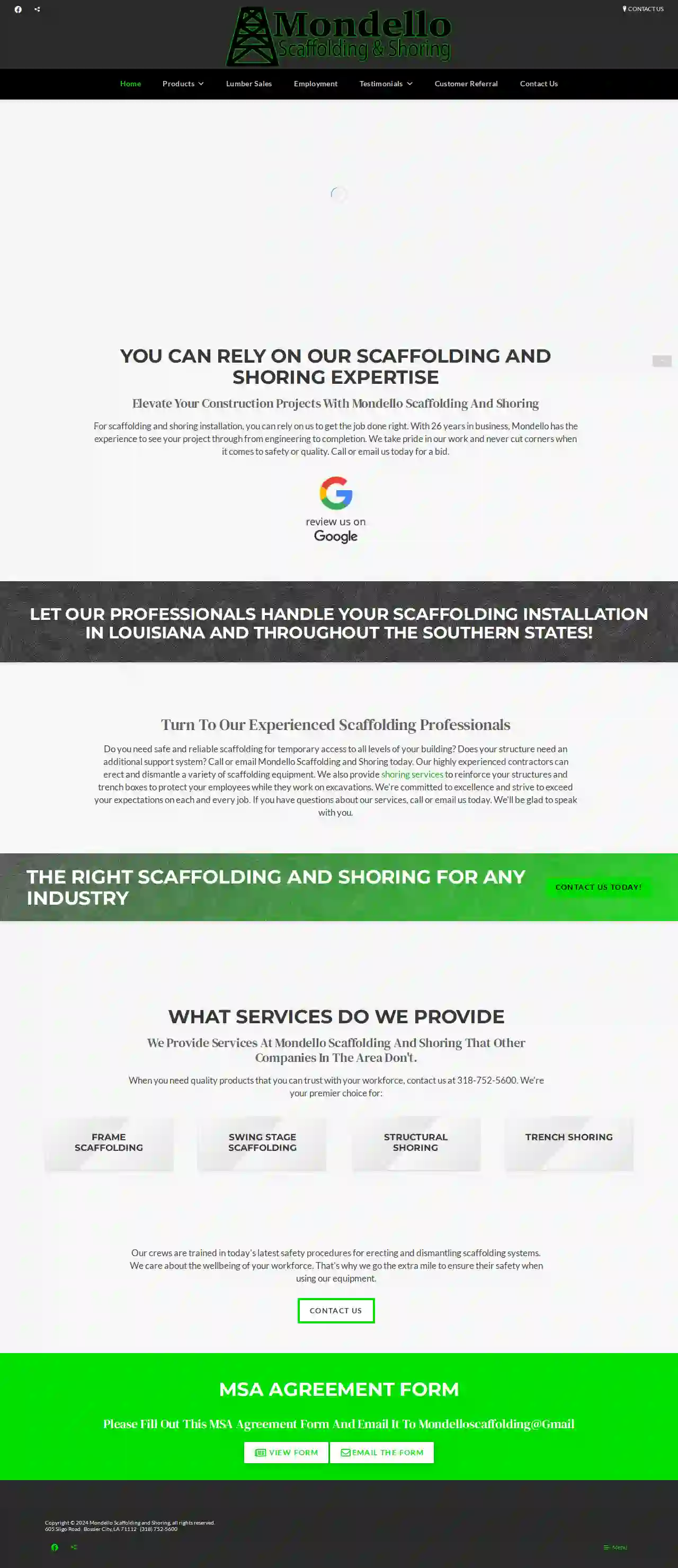
Mondello Scaffolding & Shoring
4.76 reviewsBossier City, LA, 605 Sligo Road, 71112, USMondello Scaffolding and Shoring is a premier provider of scaffolding and shoring services, offering a wide range of solutions for construction projects. With over 26 years of experience, the company prides itself on its commitment to safety, quality, and customer satisfaction. From frame scaffolding to trench shoring, Mondello Scaffolding and Shoring has the expertise and equipment to meet all your construction needs.
- Services
- Why Us?
- Testimonials
- Gallery
Get Quote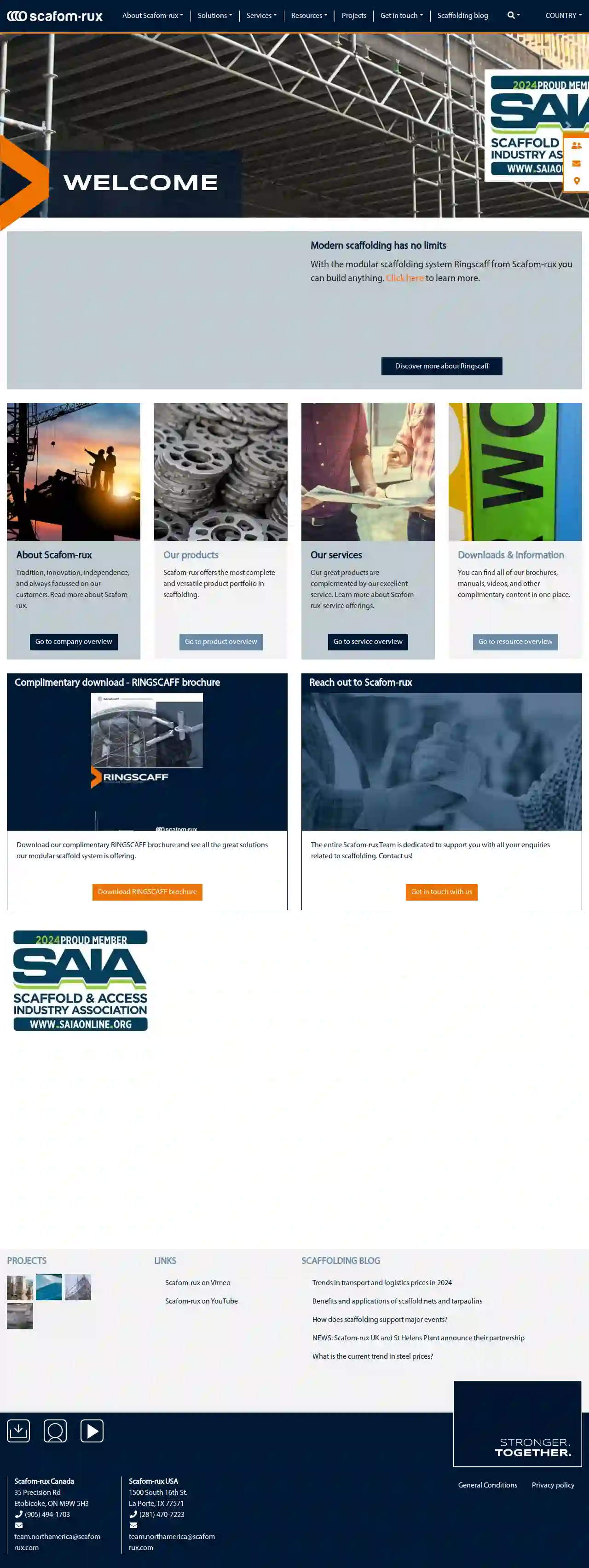
Scafom USA
52 reviews35 Precision Rd, Etobicoke, M9W 5H3, USAbout Scafom-rux Scafom-rux is a leading global provider of innovative and reliable scaffolding solutions. With a rich history of tradition, innovation, and customer focus, we offer a comprehensive range of products and services to meet the diverse needs of our clients in various industries. Our commitment to excellence is reflected in our high-quality products, exceptional service, and unwavering dedication to safety. We strive to be a trusted partner for our customers, providing them with the best possible solutions for their scaffolding requirements.
- Services
- Why Us?
- Gallery
Get Quote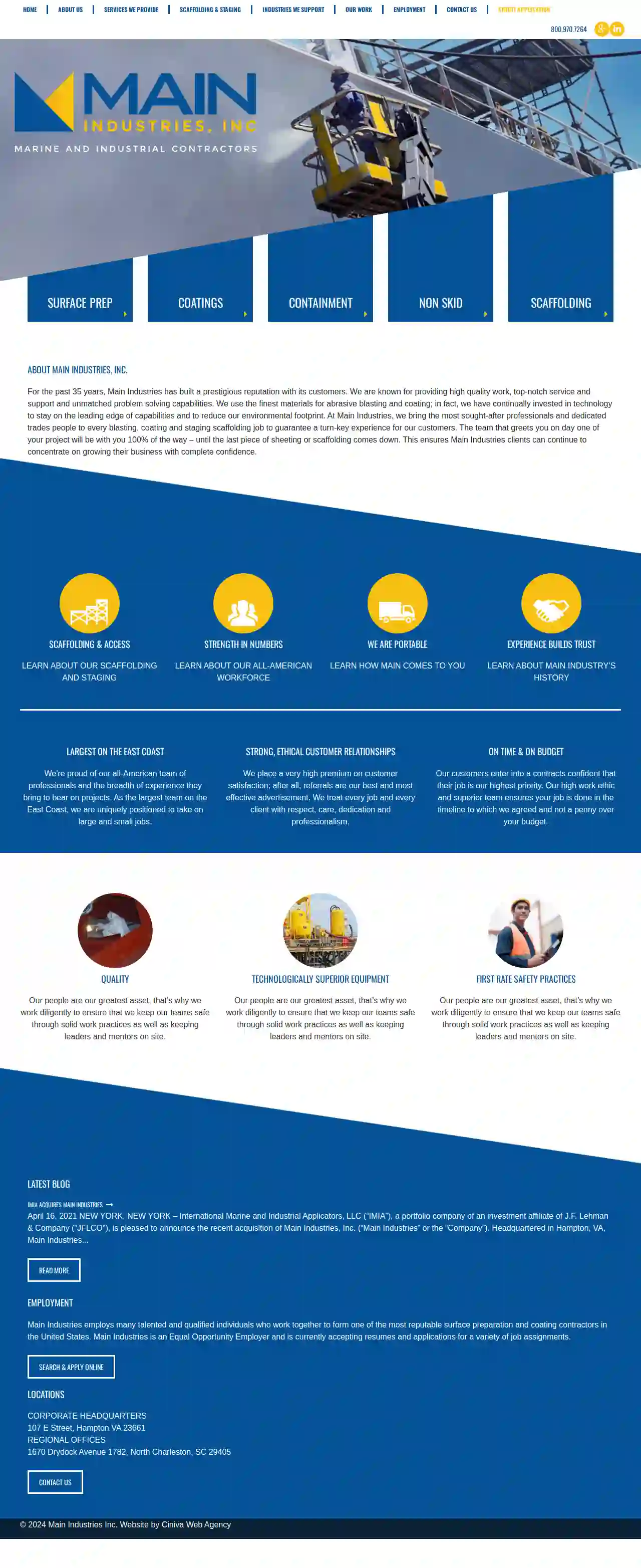
Main Industries, Inc
Hampton, VA, 107 E Street, 23661, USMain Industries, Inc. is a prestigious surface preparation and coating contractor with over 35 years of experience. The company is known for providing high-quality work, top-notch service and support, and unmatched problem-solving capabilities. Main Industries uses the finest materials for abrasive blasting and coating, and has continually invested in technology to stay on the leading edge of capabilities and reduce its environmental footprint. The company brings together the most sought-after professionals and dedicated tradespeople to guarantee a turn-key experience for its customers. The team that greets clients on day one of a project will be with them 100% of the way, ensuring that clients can concentrate on growing their business with complete confidence.
- Services
- Why Us?
- Accreditations
- Gallery
Get Quote
Apache Industrial
51 reviewsCorporate Office, North Lake Houston Shop and Training Facility, 250 Assay Street, Houston, Texas, 77044, USApache Industrial is a leading provider of soft craft services, including scaffolding, fireproofing, coatings, insulation, digital solutions, and abatement. With over 40 locations across North America, the company offers a comprehensive and one-stop solution for project needs, emphasizing efficiency, quality, safety, and environmental compliance. Apache Industrial has a strong commitment to digitization and technology, providing innovative digital solutions to enhance project management, scanning, design, and 3D modeling. The company prioritizes customer-specific solutions, cost savings, and safety, with a focus on quality inspection teams and experienced craft professionals.
- Services
- Why Us?
- Accreditations
- Our Team
- Testimonials
- Gallery
Get Quote
Industrial Specialists, LLC
52 reviewsGonzales, LA, 39376 Babin Road, 70737, USIndustrial Specialists is a leading provider of refractory services and industrial coatings solutions. With three locations in Louisiana and Texas, the company delivers unmatched results that are safe, on time, and on budget, even in challenging environments. Their services include Industrial Coatings, Refractory Services, BrandTech Precision Welding, and Turnkey Services, ensuring customer satisfaction and safety.
- Services
- Why Us?
- Gallery
Get Quote
Excel Modular Scaffold & Leasing Corporation
422 reviewsWalker, LA, 17900 Excel Blvd., 70785, USAt Excel Modular Scaffold, our strength is our people, driving our growth and success. We boast the best talent retention record, with highly-trained and seasoned professionals. Our mission: to deliver first-class service with the best industry experts. We EXCEL at what we do. With custom components and approaches for any project, Excel is the solution for complex projects. From airlifting scaffold to temporary jig stands, we are always innovating approaches that will save time and money.
- Services
- Why Us?
- Gallery
Get Quote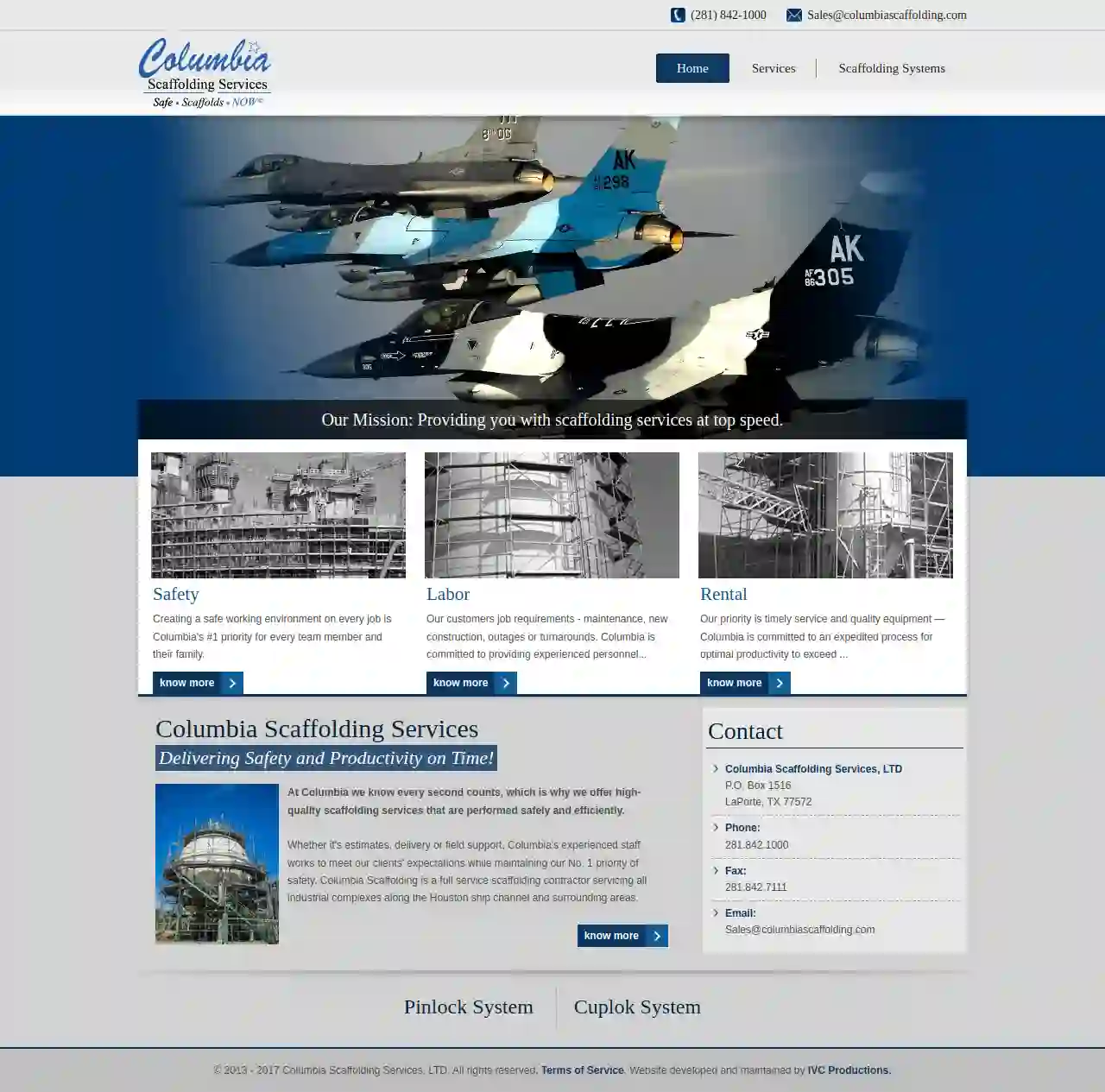
Columbia Scaffolding Services
3.47 reviewsLaPorte, TX, P.O. Box 1516, 77572, USColumbia Scaffolding Services, LTD is a full service scaffolding contractor that delivers safety and productivity on time. With a focus on safety, labor, and rental services, Columbia aims to meet clients' expectations efficiently. Based in LaPorte, TX, they serve all industrial complexes along the Houston ship channel and surrounding areas.
- Services
- Why Us?
- Accreditations
- Our Team
- Testimonials
- Gallery
Get Quote
BrandSafway Services Baltimore-Washington, D.C.
4.225 reviews123 BrandSafway Blvd, Baltimore, 21000, USBrandSafway is a leading provider of access solutions, including scaffolding, aerial work platforms, and forming and shoring equipment. With a strong presence in the Baltimore-Washington, DC area, the company offers a wide range of services tailored to meet the specific needs of clients. BrandSafway's mission is to provide safe, efficient, and innovative solutions that enhance productivity and profitability for its customers. The team consists of experienced professionals dedicated to delivering exceptional service and ensuring customer satisfaction.
- Services
- Why Us?
- Accreditations
- Our Team
- Testimonials
Get Quote
Over 2,353+ Scaffolding Contractors on our platform
Our scaffolding companies operate in Silver Spring and surroundings!
ScaffoldingHQ has curated and vetted Top Scaffolding Companies arround Silver Spring. Find a reliable business today.
Frequently Asked Questions About Scaffolding Rental
- Wear a Safety Harness: Always wear a properly fitted safety harness and secure it to a designated anchor point on the scaffolding.
- Inspect Before Use: Check for any damage or loose components before each use.
- Keep the Platform Clear: Remove tools, materials, and debris to prevent tripping hazards.
- Never Overload the Scaffolding: Stay within the maximum load capacity indicated on the scaffolding tag.
- Be Weather Aware: Avoid working on scaffolding during high winds, storms, or icy conditions.
- Use Proper Access: Use designated ladders or stairs to access and exit the scaffolding platform.
- Follow Training: Ensure all workers on the scaffolding have received proper safety training.
- Reputation and Experience: Look for a company with a good track record and a history of satisfied customers.
- Licensing and Insurance: Ensure they have the proper licenses and insurance coverage to protect you from liability.
- Safety Practices: Inquire about their safety policies, training programs, and inspection procedures.
- Equipment Availability and Quality: Confirm they have the type of scaffolding you need and that it's in good condition.
- Pricing and Rental Terms: Compare quotes and assess the rental rates, duration, and any additional fees.
- Customer Service: Choose a company that is responsive, communicative, and helpful.
- Stop Using It Immediately: Do not attempt to use damaged scaffolding. It could be unsafe.
- Contact the Rental Company: Notify the scaffolding rental company about the damage as soon as possible.
- Document the Damage: Take photos or videos of the damage for documentation. The rental agreement should outline the procedures for handling damaged equipment. You may be responsible for repair or replacement costs, depending on the circumstances and the terms of the agreement.
What are the safety precautions when working on scaffolding?
What are some things to consider when choosing a scaffolding rental company?
What happens if the scaffolding is damaged during my rental period?
Can I modify or alter the scaffolding after it's erected?
What are the safety precautions when working on scaffolding?
- Wear a Safety Harness: Always wear a properly fitted safety harness and secure it to a designated anchor point on the scaffolding.
- Inspect Before Use: Check for any damage or loose components before each use.
- Keep the Platform Clear: Remove tools, materials, and debris to prevent tripping hazards.
- Never Overload the Scaffolding: Stay within the maximum load capacity indicated on the scaffolding tag.
- Be Weather Aware: Avoid working on scaffolding during high winds, storms, or icy conditions.
- Use Proper Access: Use designated ladders or stairs to access and exit the scaffolding platform.
- Follow Training: Ensure all workers on the scaffolding have received proper safety training.
What are some things to consider when choosing a scaffolding rental company?
- Reputation and Experience: Look for a company with a good track record and a history of satisfied customers.
- Licensing and Insurance: Ensure they have the proper licenses and insurance coverage to protect you from liability.
- Safety Practices: Inquire about their safety policies, training programs, and inspection procedures.
- Equipment Availability and Quality: Confirm they have the type of scaffolding you need and that it's in good condition.
- Pricing and Rental Terms: Compare quotes and assess the rental rates, duration, and any additional fees.
- Customer Service: Choose a company that is responsive, communicative, and helpful.
What happens if the scaffolding is damaged during my rental period?
- Stop Using It Immediately: Do not attempt to use damaged scaffolding. It could be unsafe.
- Contact the Rental Company: Notify the scaffolding rental company about the damage as soon as possible.
- Document the Damage: Take photos or videos of the damage for documentation. The rental agreement should outline the procedures for handling damaged equipment. You may be responsible for repair or replacement costs, depending on the circumstances and the terms of the agreement.